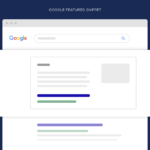Keeping up with SEO in 2025 feels exhausting. You spend hours learning, testing, and adjusting, but the traffic barely moves. Google updates. AI changes how people search. And every time you feel close, something shifts again.
Do you need another complex theory? No. You need clarity. You need SEO strategies that help increase website traffic today, not six months from now. That’s precisely what we will share here. Simple, tested, and built for how search works right now. Let’s get into the latest SEO techniques and see how AI in SEO is rewriting the rules.
Top SEO Strategies 2025 to Boost Website Traffic
SEO in 2025 will not just focus on keywords. So, how to boost website traffic?
Innovative strategies help by using advanced tools and improving the user experience. If you follow these five SEO tactics, you can expect more people to visit your site in the coming year.
1. Embrace AI-Driven SEO Tools
AI is transforming many industries, and SEO is no exception. AI-driven SEO tools can automate or accelerate everyday tasks. For example, AI-based platforms can suggest keyword topics, analyze competitors, or draft content outlines. ChatGPT and other AI assistants can brainstorm titles or meta descriptions, while specialized SEO tools use machine learning to track ranking trends. These capabilities mean you spend less time on busywork and more on creative strategy.
Of course, AI in SEO doesn’t replace good fundamentals – in fact, Google reminds us that the best practices for SEO remain relevant even with AI. Think of AI like a helpful assistant: it can speed up research or highlight opportunities, but you still steer the ship. To use AI tools effectively:
- Generate content ideas: Ask an AI about common questions or hot topics in your field, then craft content that answers them.
- Optimize existing content: Use AI in SEO to find gaps or suggest improvements (for instance, rewriting unclear sentences or creating summaries).
- Automate routine tasks: Many SEO tools can audit pages or report issues. Let AI-powered software handle these checks so you can focus on strategy.
Combining human expertise with AI-driven tools allows you to apply the latest SEO techniques more efficiently. The key is to review any AI output carefully: ensure accuracy, inject your brand voice, and follow Google’s helpful-content advice. With AI in your toolkit, you’ll keep up with 2025’s fast pace and increase website traffic SEO through more intelligent optimization.
2. Optimize for Answer Engines and Zero-Click Searches
Search engines and voice assistants (like Siri or Alexa) are evolving into answer machines. Users often get immediate answers without clicking a link. This is called a zero-click search: the query results page itself contains the answer.
For example, Google might display the answer to “how many kilometers in a mile” right at the top of the page. Some results use special panels or featured snippets (like Google’s Knowledge Graph) to show information instantly. Users may get all they need without visiting your site if your content appears there.
Although this means fewer direct clicks, appearing in these answer features still builds visibility and trust. Here’s how to prepare:
- Answer common questions clearly: Write concise definitions or explanations for frequently asked questions in your niche. If necessary, use a Q&A or FAQ format. Make the answers short and to the point, as Google often pulls those for snippets.
- Use lists and tables: Structured information (like bullet lists or tables) will likely be pulled as featured snippets. For instance, a quick list of steps or key facts can appear on SERPs.
- Implement structured data: Add schema markup (FAQ schema, Q&A schema, etc.) to help search engines identify your answers. A proper schema can increase the chance that your content feeds into an answer box or AI overview.
- Think voice search: People speaking queries tend to ask full questions. Ensure your content answers questions in natural language. Ensure key info (address, hours, phone) is prominent and marked up for local businesses.
By optimizing in these ways, you make your site a helpful source for answer engines. Even if users don’t click immediately, being featured can drive brand trust and can still bring traffic (for example, when users follow a link for more detail).
The trend toward zero-click searches means focus on being the answer – provide clear, authoritative information on your site so search engines can confidently use your content in the results.
3. Prioritize E-E-A-T Principles
Google’s quality guidelines highlight E-E-A-T: Experience, Expertise, Authoritativeness, and Trustworthiness. The extra “E” (Experience) is new in Google’s criteria, but overall, this is about showing users you are a reliable source. Put simply, your content should come from knowledgeable authors and be backed by evidence. For instance, a medical article written by a credentialed doctor is more trusted than anonymous content.
- Experience: Demonstrate first-hand experience. If you write about a product or service, include details of how you actually used it. Personal insights or case studies boost credibility.
- Expertise: Highlight qualifications or deep knowledge. An author bio that shows credentials or years of practice tells users (and Google) that your writer is an expert on the topic.
- Authoritativeness: Build a strong reputation. If other respected sites link to you, or if your brand is recognized in the industry, that signals authority. You can also increase this by citing authoritative sources and being recognized in other media.
- Trustworthiness: Ensure accuracy and transparency. Use HTTPS (get the padlock icon) so users know your site is secure. Cite trustworthy references (like industry studies or official data), and keep content up to date. Clear contact info and editorial policies also help users trust your site.
Google notes that trust is the most important of these factors. Always review your content for accuracy and honesty.
For example, avoid exaggerated claims or too many ads that might scare users. If your content clearly shows who wrote it, what they know, and why they’re writing it (not intended to chase clicks), you’ll align with Google’s E-E-A-T.
Sites with strong E-E-A-T tend to rank better, especially on sensitive topics like health or finance.
In short, build content that people believe. This will naturally boost your authority and traffic over time.
4. Enhance Technical SEO and User Experience
Google explicitly rewards sites that offer a great page experience. Here are the essential points you can consider:
- Mobile-Friendly Design: Google now uses the mobile version of a site for ranking. Make sure your site works smoothly on smartphones (responsive design is easiest). If visitors can’t use your site on mobile, you’ll miss out on a massive chunk of traffic.
- Speed and Stability (Core Web Vitals): Slow or janky pages drive users away. Google’s Core Web Vitals check the site’s loading speed and user-friendliness. Aim for fast load times (e.g., have your main content appear within about 2.5 seconds) and avoid shifting layouts. Google specifically recommends achieving good Core Web Vitals for search success. Tools like PageSpeed Insights can highlight bottlenecks.
- Secure and Crawlable: Use HTTPS (get the padlock icon) to secure data. Make sure search engines can crawl your site: no unwanted tags and a working sitemap. A secure, accessible site builds trust and avoids ranking penalties.
- Clear Structure and Schema: Organize content with logical headings and navigation so users and crawlers can find information easily. Add structured data (schema markup) where appropriate – for example, an article, product, or FAQ schema. This helps search engines understand your content and can lead to rich results (like star ratings or answer boxes).
You’ll provide the “great page experience” Google wants by improving these technical and UX aspects.
5. Leverage Content Repurposing and Diverse Platforms
Don’t limit your content to just your website. Today’s audiences are scattered across many platforms – from video to social media to podcasts. Repurposing and sharing your content in different formats can drive new traffic back to your site.
Here are some friendly ideas:
- Create videos from articles: Turn a blog post or guide into a short video (for YouTube or social). YouTube alone has over 2.7 billion monthly active users. Even a quick explainer video with a link in the description can pull viewers to your site for more details.
- Share on social media: Craft social posts (LinkedIn, Instagram, Twitter, etc.) around your content. There are about 5.31 billion social media users worldwide in 2025. A striking image, infographic, or a teaser tweet linking to your content can reach parts of your audience who might never start with Google.
- Try audio formats: If it fits your brand, record a podcast or audio interview on topics you cover. Podcast listeners are engaged; mention your blog or website during the episode. You can also transcribe audio episodes and post the transcript as a blog (this adds fresh SEO content).
- Refresh and re-share old content: Update older successful posts with new information or examples, then republish them. Promote these refreshed posts as “new” content. This breathes new life into content that already ranks well.
Over time, this diverse approach can significantly boost your overall traffic and brand visibility.
Conclusion
SEO strategies 2025 mean staying flexible, focusing on people, and using every tool at your disposal. Our SEO strategies for 2025 are solid enough that you can use to learn how to drive traffic to websites.
Remember, successful SEO is about a balance of technology and human insight. Use AI to save time, write content that genuinely helps people, keep your site fast and user-friendly, and share your knowledge in as many relevant places as possible. Over time, these efforts compound into more visibility and visitors.
Keep testing and learning as SEO is an ongoing process.
With patience and a solid strategy, these methods will work together to boost your traffic well into 2025 and beyond.






